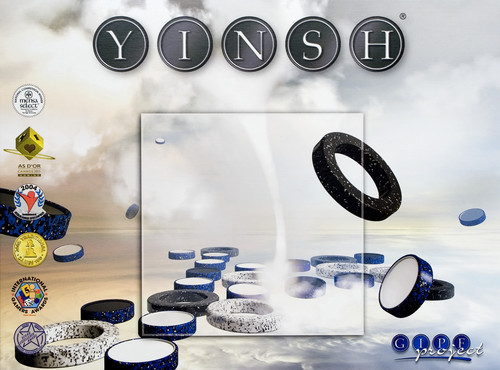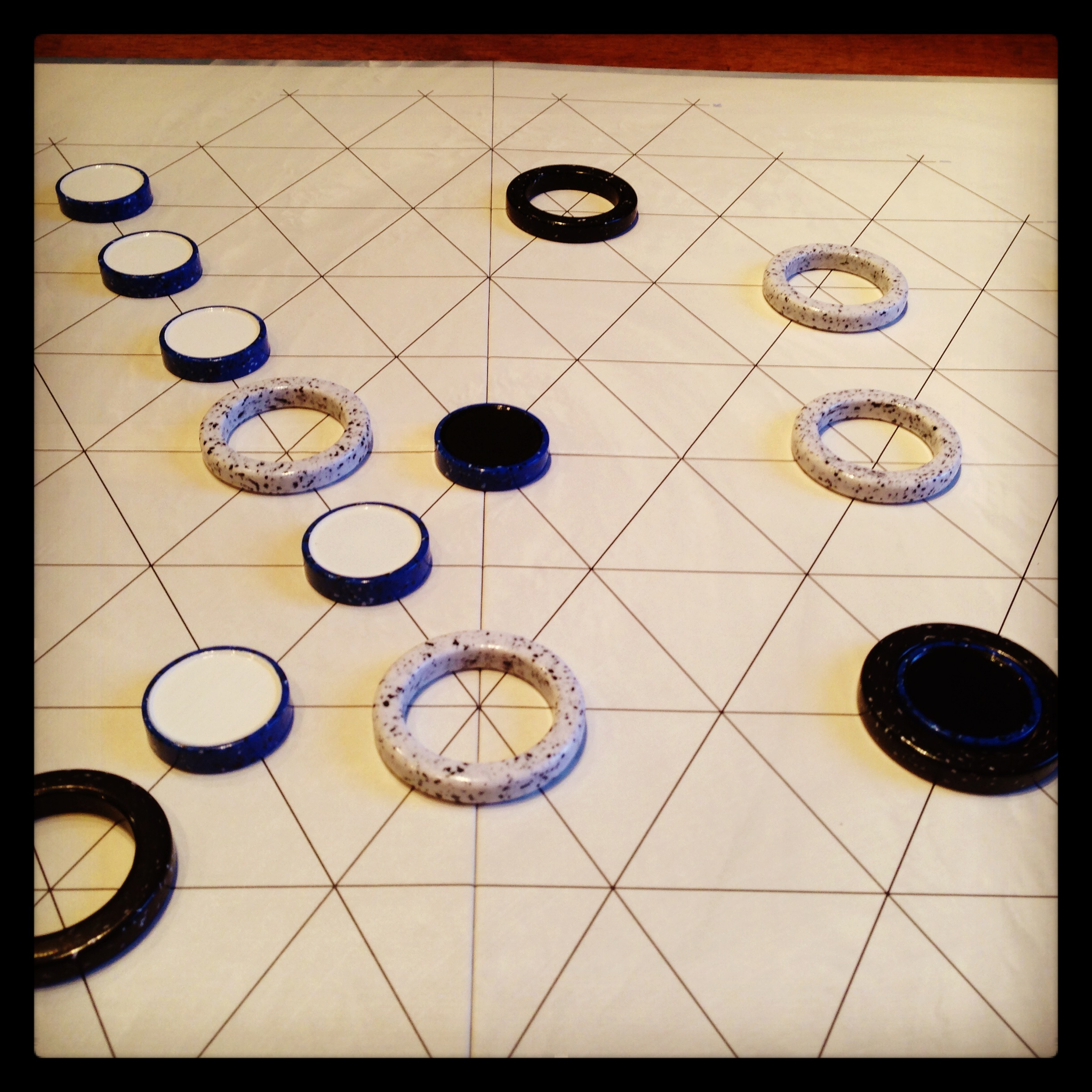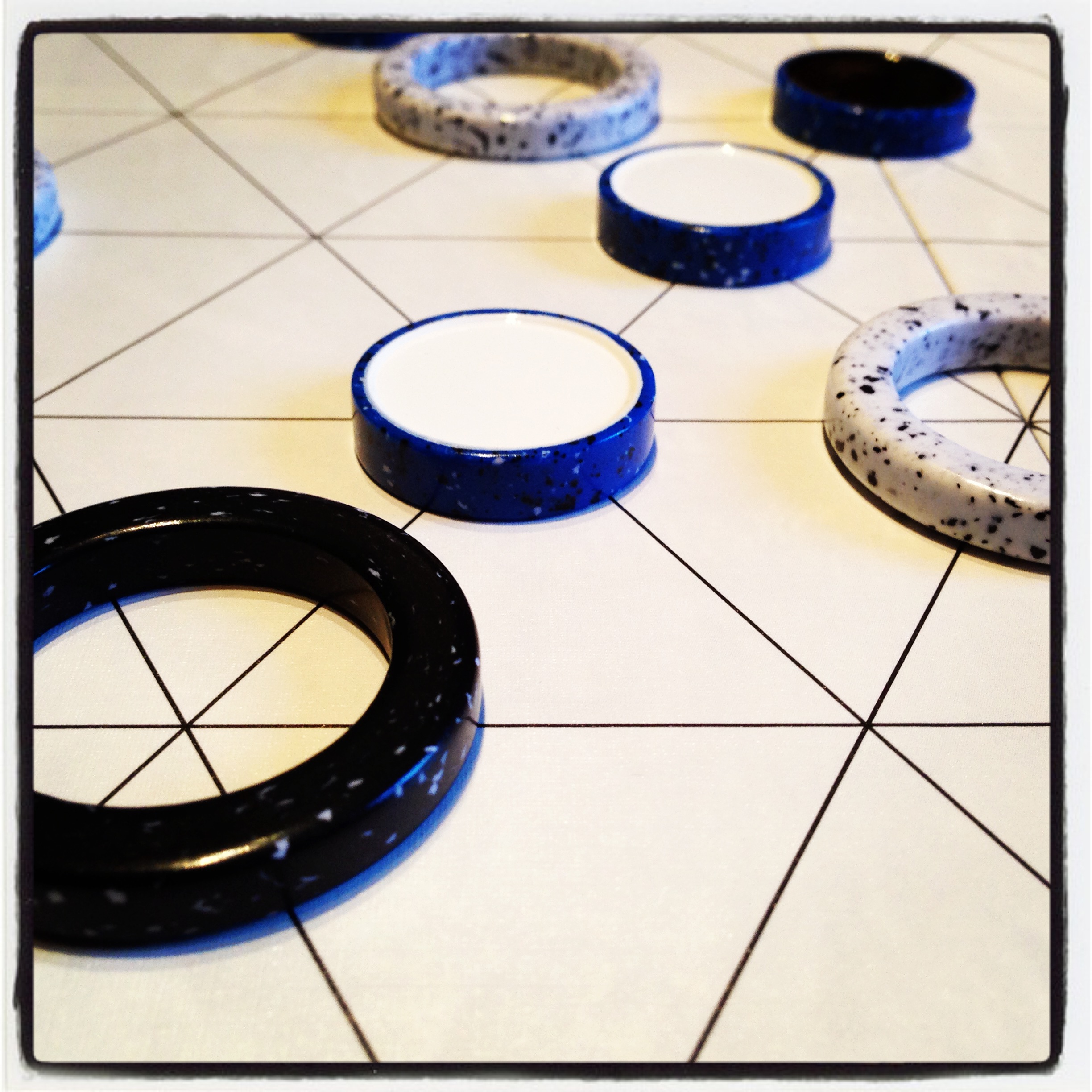by Firestone
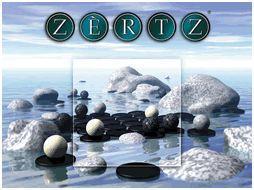 Today we're going to review a two-player game that's 13 years old—how retro! It's an abstract game, which means I'm terrible at it, but more specifically it means it's a game that has little-to-no luck, and often has no theme. Zertz is part of Project Gipf—a series of six abstract games designed by Kris Burm.
Today we're going to review a two-player game that's 13 years old—how retro! It's an abstract game, which means I'm terrible at it, but more specifically it means it's a game that has little-to-no luck, and often has no theme. Zertz is part of Project Gipf—a series of six abstract games designed by Kris Burm.
Components
- 37 round discs that make up the "board."
- 24 marbles: six white, eight grey, and 10 black.
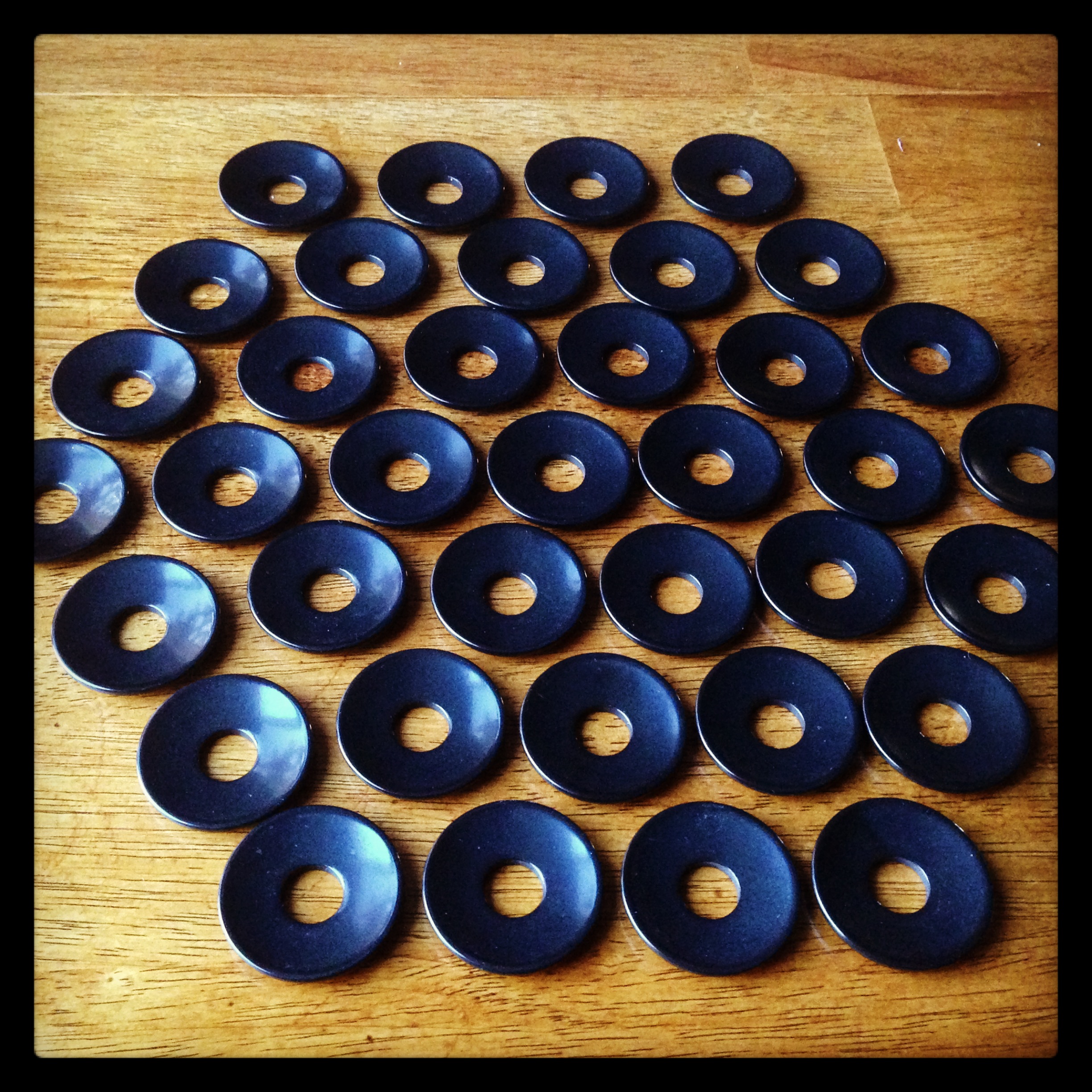
Setup
You put five white, seven grey, and nine black marbles into a common pool. (The extra one of each color is used in a variant.) Use the discs to form a hexagonal game board. Then choose someone to go first.
<-----UPDATE: My friend Drew made fun of me this morning when he saw this post, because my discs were upside down. I've always played that way, and now I feel like a complete dork.
Gameplay
The goal of the game is to capture marbles—either two of each color, three white marbles, four grey marbles, or five black marbles. The first player to achieve one of those goals, wins.
One your turn you can do one of two things:
- Place a marble and remove a piece of the board, or
- Capture one or more marbles already on the board.
It's important to note that the marbles in the pool, and the ones on the board, don't belong to either player. You can choose one of any of the colors of marbles and place it on an empty disc that makes up the board. Then you remove a free disc from the board—and free means there's not a marble on it, and you can remove it without disturbing any other pieces. If there are no free pieces, you just place the marble.
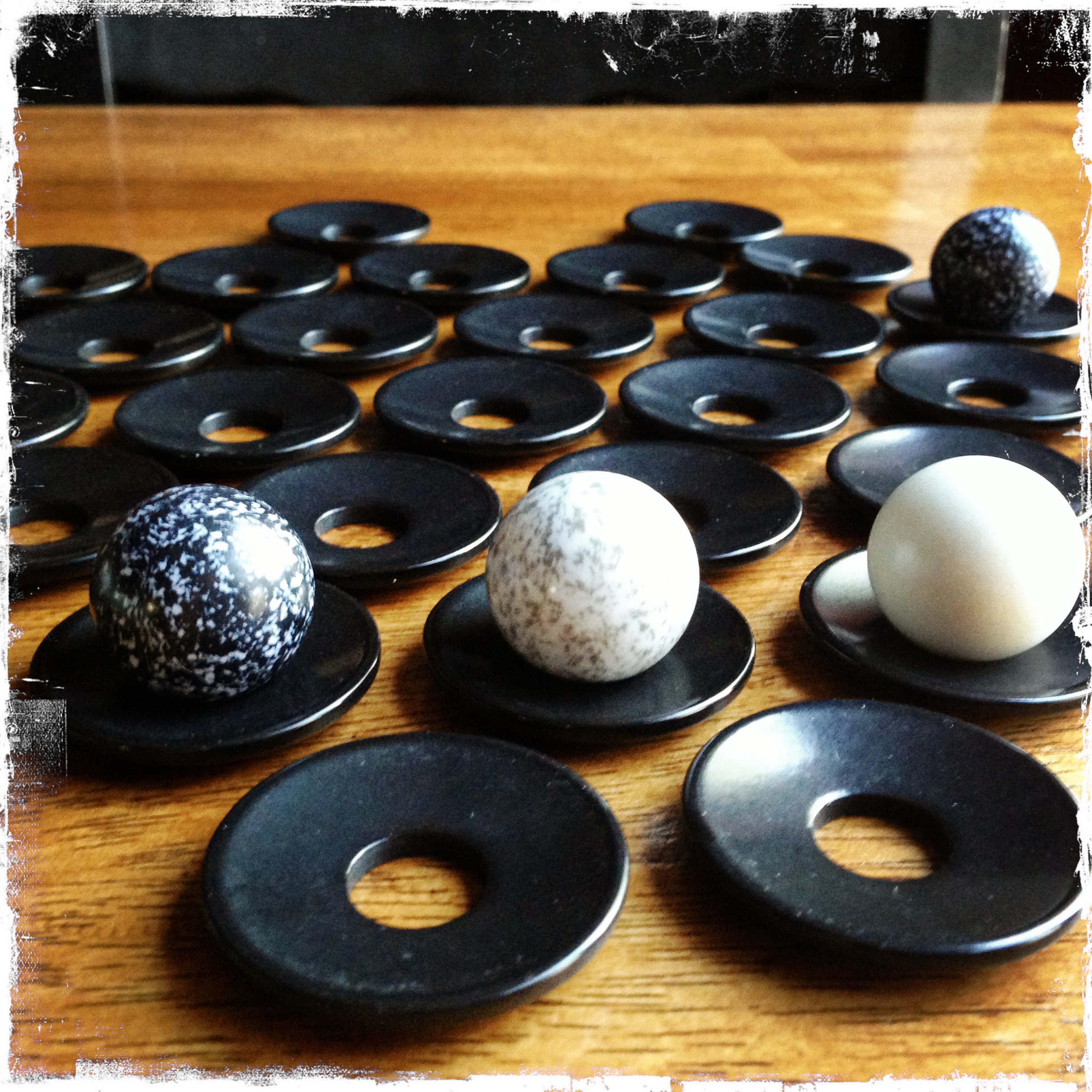
The other thing you can do is capture marbles—and in fact if you can do that on a turn, you must do that. To capture a marble, you simply jump over it, as in checkers. There must be an empty disc for the jumping marble to land on. The colors don't make any difference: you can jump any color with any other color. And if, after capturing a piece, you can capture another, you must do so. But if there are multiple pieces you could capture, you can do so in any order you want—even if that means you're capturing fewer pieces.
If you capture a piece, you don't place a marble and you don't remove a disc.
If, through removing discs, you manage to isolate one or more discs, you can claim those pieces—including the marbles on them. But you can only capture marbles this way if there are no vacant pieces in the group. So often you're isolating one piece with one marble on it, and claiming that marble.
You keep playing like this until one person meets one of the goals listed above.
Recommendations
Youth Group Game? No! It's for two players, and it's abstract, so...no. If one of your kids likes chess, this would be a good game to bond over, though.
Family Game! Maybe! Again, it's two-player, so not a great game for a whole family, but you could certainly play it with a spouse or kiddo.
Gamer's Game? Definitely! There's enough meat here to please any hardcore gamer—unless you just don't like abstracts.
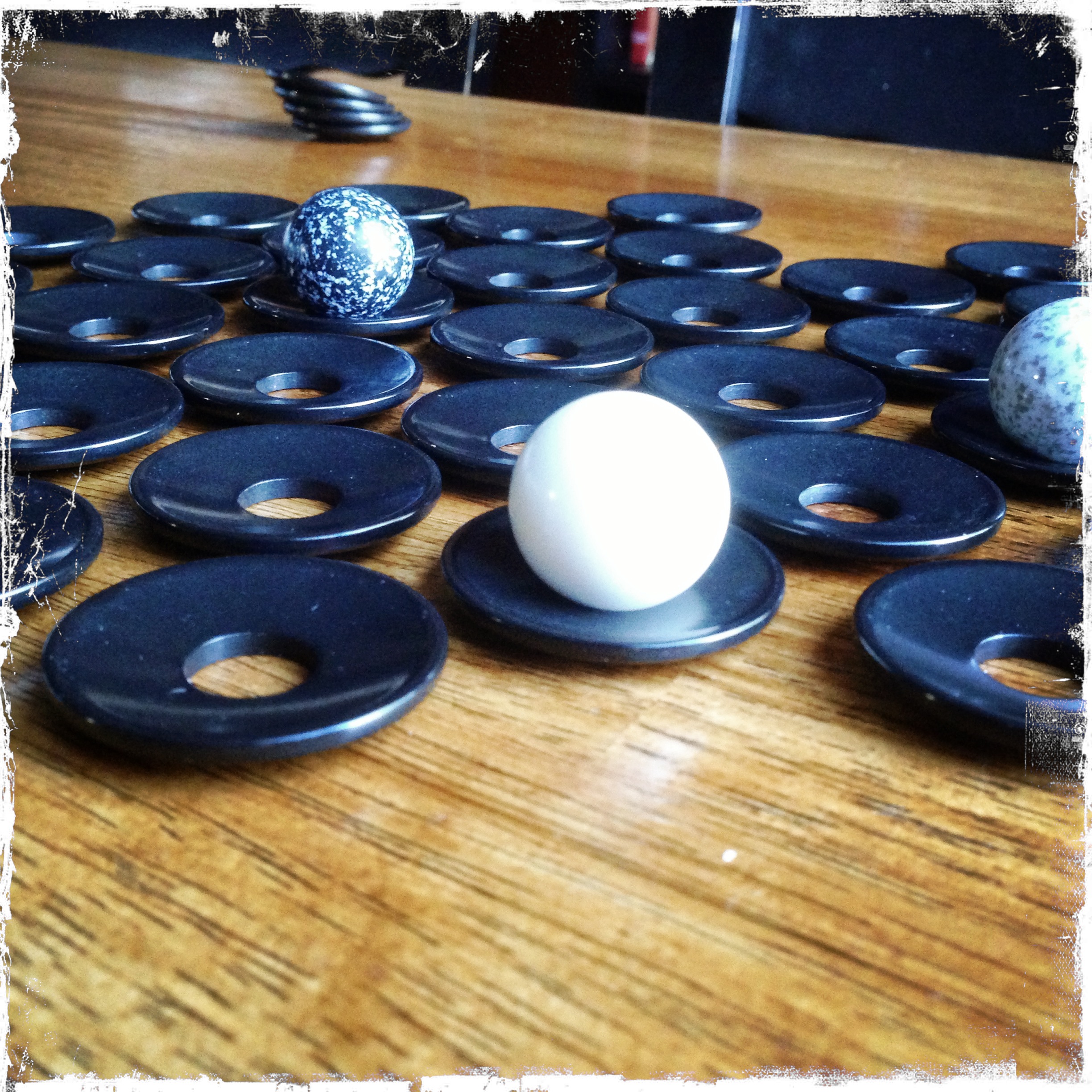 The Verdict
The Verdict
I'm really terrible at abstracts. I don't know if they're too analytical and mathy for me. My brain's just not wired to do well at them. But there are a few that I do still enjoy, and Zertz is one of them. I've played DVONN and Yinsh in Project Gipf, and while I would say Yinsh is the most newbie-friendly of those I've played, Zertz is my favorite.
It's easy to learn, but full of subtleties and new things to learn. And the thing is just gorgeous.
One of the most interesting aspects is that you're often sacrificing pieces, in order to set up the colors you need to win; it makes the game very interesting. And you'll find yourself trying to manipulate your opponent into making bad tradeoffs with you. Have I mentioned yet that I'm terrible at this?
The downside—and this is true of most abstracts—is that someone who's played before will often just crush someone who hasn't. And one mistake can certainly cost you the entire game.
Nevertheless, I can wholeheartedly recommend this for anyone who's ever wanted to dip a toe in the abstract sea. Or maybe you want to cannonball in instead: Zertz is your game.
Thanks so much for reading! Don’t forget to tell your friends about us by liking us on Facebook, following us on Twitter, and Instagram as well as subscribing over on the right!


